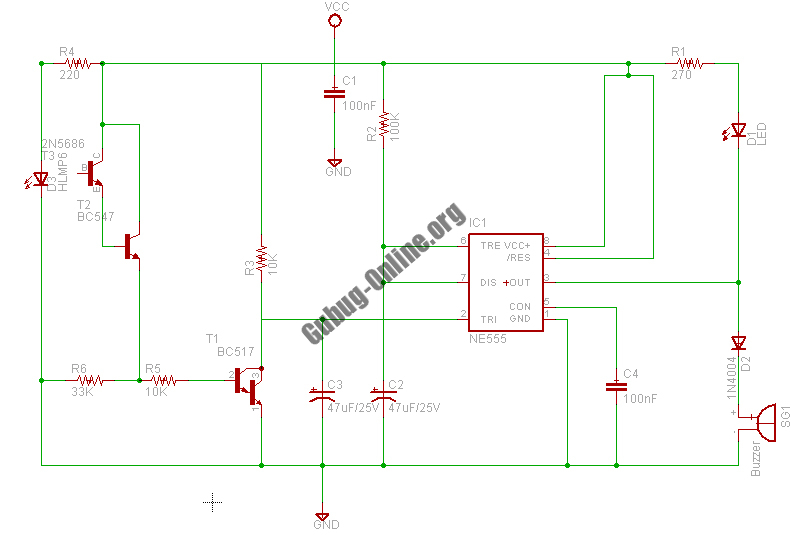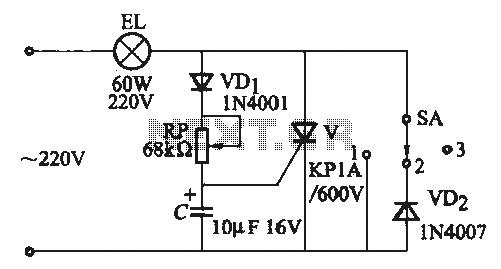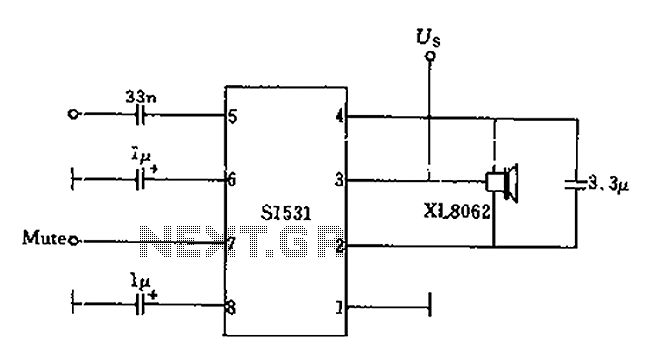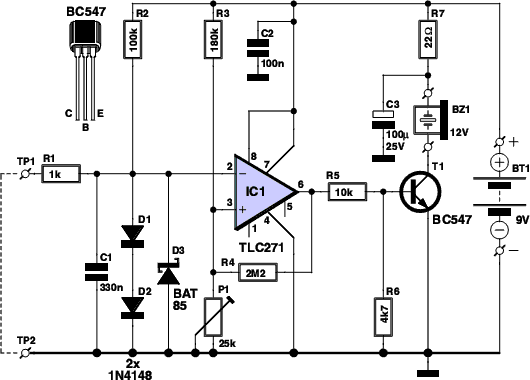
Clear Glass Sensor Circuit

This design circuit project involves a clear glass sensor circuit intended for experimental or hobbyist applications. The concept is straightforward and relies on a homemade sensor unit that includes one high-efficiency ultra-bright red LED (D1) and a standard phototransistor.
The clear glass sensor circuit operates on the principle of light detection and reflection. The ultra-bright red LED (D1) emits light, which is directed towards the glass surface. When an object approaches the sensor, the light emitted by the LED reflects off the glass and returns to the sensor unit. The phototransistor, which is sensitive to the wavelength of the emitted light, detects this reflected light.
In the schematic, the LED (D1) is connected in series with a current-limiting resistor to ensure that it operates within its specified current ratings. This resistor prevents excessive current from flowing through the LED, which could lead to overheating and failure. The phototransistor is connected in a configuration that allows it to act as a switch. When the reflected light reaches a certain intensity, the phototransistor turns on, allowing current to flow through its collector-emitter path.
The output from the phototransistor can be further processed or used to trigger other components in a circuit. For example, it could activate a relay to turn on a light or sound an alarm when an object is detected near the glass. Additional components, such as capacitors and diodes, may be included in the circuit to filter noise and protect against voltage spikes.
This clear glass sensor circuit is particularly useful in applications such as automatic doors, security systems, or interactive displays where proximity detection is required. The simplicity of the design makes it an excellent choice for educational purposes, allowing hobbyists to learn about basic electronic principles while experimenting with sensor technology.This is a design circuit project for a clear glass sensor circuit can be used for experiment/hobby purposes. The concept is very simple and is based on a home-made sensor unit comprising one high efficiency ultra bright red LED (D1) and a standard ph ..
🔗 External reference
The clear glass sensor circuit operates on the principle of light detection and reflection. The ultra-bright red LED (D1) emits light, which is directed towards the glass surface. When an object approaches the sensor, the light emitted by the LED reflects off the glass and returns to the sensor unit. The phototransistor, which is sensitive to the wavelength of the emitted light, detects this reflected light.
In the schematic, the LED (D1) is connected in series with a current-limiting resistor to ensure that it operates within its specified current ratings. This resistor prevents excessive current from flowing through the LED, which could lead to overheating and failure. The phototransistor is connected in a configuration that allows it to act as a switch. When the reflected light reaches a certain intensity, the phototransistor turns on, allowing current to flow through its collector-emitter path.
The output from the phototransistor can be further processed or used to trigger other components in a circuit. For example, it could activate a relay to turn on a light or sound an alarm when an object is detected near the glass. Additional components, such as capacitors and diodes, may be included in the circuit to filter noise and protect against voltage spikes.
This clear glass sensor circuit is particularly useful in applications such as automatic doors, security systems, or interactive displays where proximity detection is required. The simplicity of the design makes it an excellent choice for educational purposes, allowing hobbyists to learn about basic electronic principles while experimenting with sensor technology.This is a design circuit project for a clear glass sensor circuit can be used for experiment/hobby purposes. The concept is very simple and is based on a home-made sensor unit comprising one high efficiency ultra bright red LED (D1) and a standard ph ..
🔗 External reference
Warning: include(partials/cookie-banner.php): Failed to open stream: Permission denied in /var/www/html/nextgr/view-circuit.php on line 713
Warning: include(): Failed opening 'partials/cookie-banner.php' for inclusion (include_path='.:/usr/share/php') in /var/www/html/nextgr/view-circuit.php on line 713





